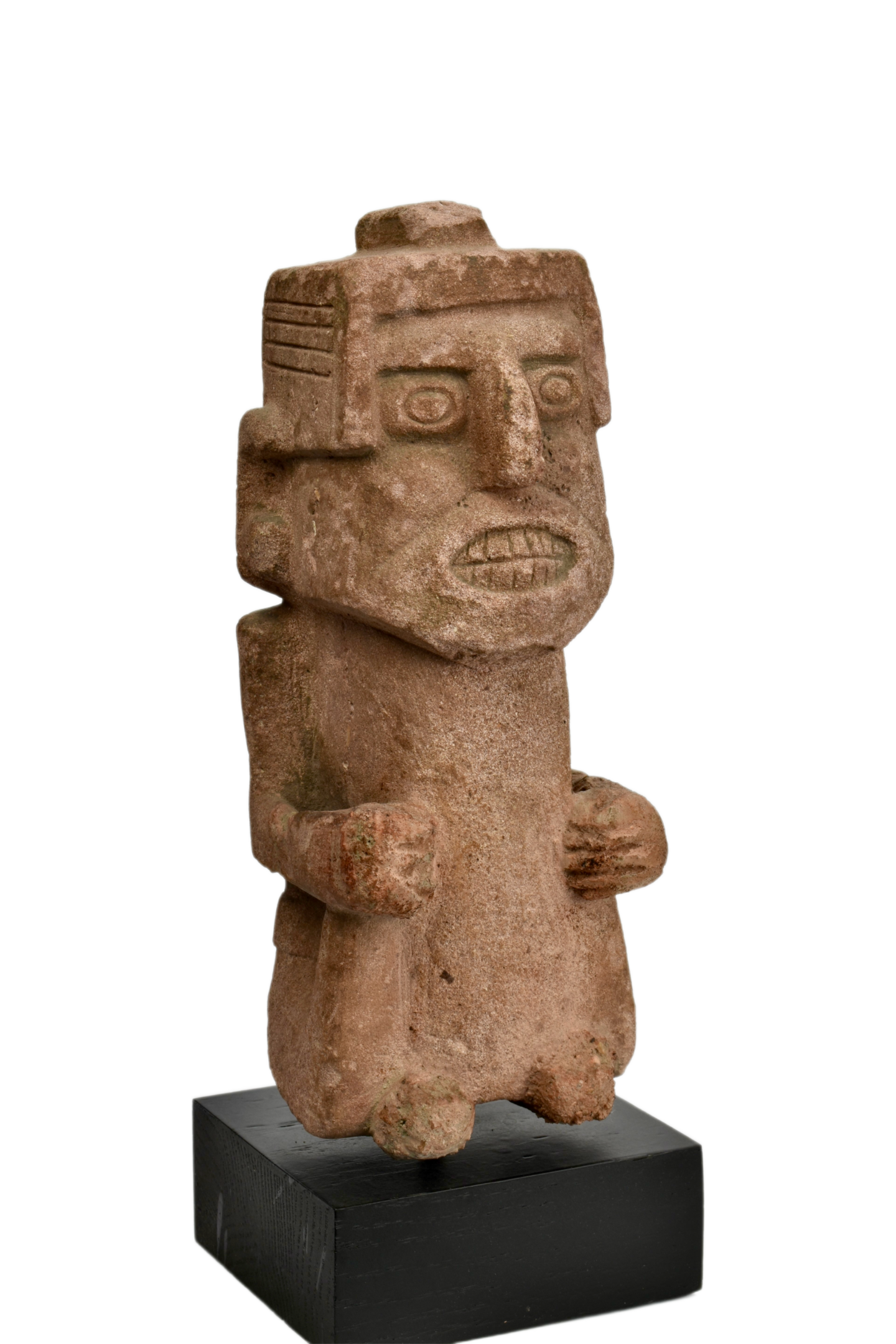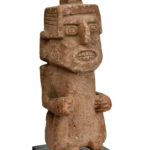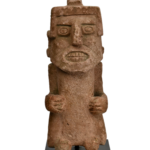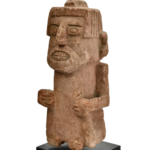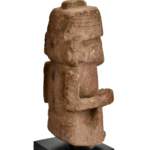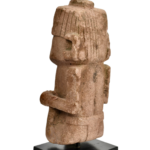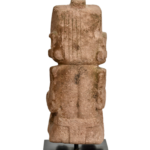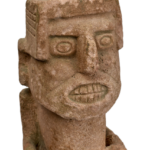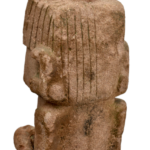Sizable Mixtec Stone Figure
Intricate Details and Artistic Narrative of this
Mixtec Stone Figure
The Mixtec culture thrived in the Oaxaca region of southern Mexico from around 900 CE to the Spanish conquest in the 16th century. Known for their intricate artwork, including stone figures, the Mixtecs excelled in metalwork, pottery, and codex painting. They developed a hieroglyphic writing system preserved in codices containing historical and genealogical information.
Mixtec society had distinct social classes based on lineage and noble status, including rulers, priests, and commoners. Their religious practices involved elaborate ceremonies dedicated to a complex pantheon of deities associated with natural elements and celestial bodies.
Significant urban centers like Monte Albán and Mitla showcased impressive architecture, including pyramids, palaces, and ball courts. Agriculture played a vital role, with terrace farming cultivating crops like maize, beans, and squash.
Engaging in extensive trade networks, the Mixtecs exchanged goods with neighboring cultures like the Zapotecs and Aztecs. Despite facing challenges, including conflicts with neighboring civilizations and Spanish colonization, Mixtec cultural influences persist in the indigenous communities of the Oaxaca region today.
This sculpture is a sizable seated ancestral Mixtec figure. The sandstone is grey-pink. He is in a squatting position with his hands propped to his knees. Facial features are aggressively robust. Wide eyes with teeth bared as if he were in a hallucinated state. He sports a short bob hairstyle and a squarish adornment. Also, he wears a loincloth and straight ears-flares. Measures 8.5″/21.59 cm; 10.5″/26.67 cm on included armless type wood base. Some repair to hands and feet. Earthen deposits throughout. Oaxaca region, Mexico. Ca. 700 – 1500 A.D.
Provenance: P. Goodman collection, Houston, Tx., acquired in the 1970s
Price $2,850 – Domestic Delivery Included
This item may become featured here in the Native American Art Magazine
Click here to see our next item.
Would you be interested in a particular piece? Please feel free to let us know.
Regional Division of Pre-Columbian Americas’ Major Archaeological Cultural Phases
